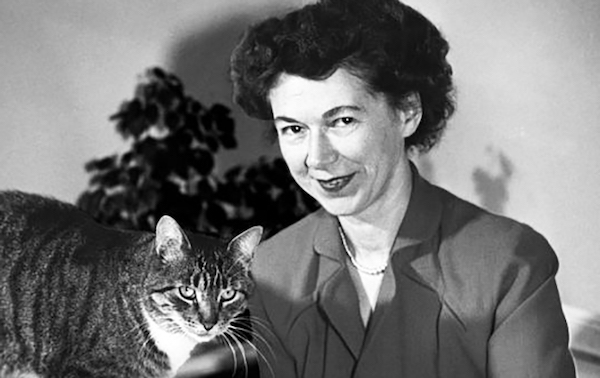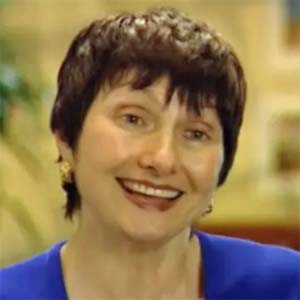Book Commentary: Literary Legacies — Children’s Literature
By Cyrisse Jaffee
2020 and 2021 saw the deaths of five titans of children’s and young adult literature. Here’s to revisiting old “classics” and discovering new ones.

Beverly Cleary in 1955. Photo: Wiki Common
Every year we mourn the loss of artists, writers, and performers who have enriched our lives. Sometimes these deaths seem to come in clusters and our accumulative sorrow and nostalgia leave us feeling bereft and somehow unmoored. We didn’t know them personally, but we knew their works intimately because they were cultural touchstones during our childhood or adolescence. We have their artistic legacy to comfort us, but their loss also reminds us of how their work shaped or changed our lives. And often, if the deaths are grouped by age, we also sense a generational shift, marking the end of something — a cohort who transformed the field they created.
So it was with 2020 and 2021, which saw the deaths of five titans of children’s and young adult literature: Beverly Cleary (age 104), Tomie dePaola (age 85), Jill Paton Walsh (age 83), Joanna Cole (age 75), and Norton Juster (age 91). Each of them was a shining star who helped define the genre of children’s literature itself. Here I’ll focus on the first four, with just a quick bow to Norton Juster, whose classic fantasy The Phantom Tollbooth remains a classroom favorite.
Beverly Cleary’s gently “realistic” fiction brought us feisty heroines, family trials and triumphs, and insights into the innermost fears, anxieties, and joys of childhood. Despite being set in a white, suburban Portland neighborhood — and the fact that her themes are no longer “radical” (yes, they were once considered so!) — Cleary’s stories remain relevant, from Ramona’s father losing his job (Ramona and Her Father) to Leigh coping with his parents’ divorce by writing to his favorite author (Dear Mr. Henshaw).
Beverly Cleary, who died just a few weeks shy of her 105th birthday, worked as a librarian, raised twins with her husband, Clarence, and managed to write more than 40 books. From her very first book, Henry Huggins, published in 1950, to her groundbreaking Ramona the Pest in 1968, to her picture books, Cleary used simple language, ordinary events, and characters that were easy to relate to. As “realistic” fiction in children’s literature became bolder, more diverse, and often more serious, Cleary’s canon may have been considered too “safe” or plain. But at their core, Cleary’s books remain honest and resonant. In 2019 American food and travel writer Amy Mah — who lives in Paris and Vietnam — undertook a trip with her husband and young daughter to Cleary’s Oregon hometown, as an homage to the author. Mah says, in her April 6, 2021, New York Times article about the trip: “As a child, I loved Ms. Cleary’s books because they didn’t condescend…. As an adult, rereading the books aloud to my daughter, I was struck by their timelessness.”

The prolific Joanna Cole. Wiki Common.
Like Cleary, Joanna Cole was also a librarian. She is perhaps best known for The Magic School Bus series, which has sold millions of copies and been translated into dozens of languages. The series made science appealing and entertaining. The goofy adventures of a bunch of kids and a kooky teacher — venturing into the human body or onto the ocean floor or back in time — helped children’s nonfiction leap over dull boundaries and become funny and exciting. An animated PBS show starring Lily Tomlin as Ms. Frizzle ran for 18 years. But Cole wrote dozens of other books as well — over 250 of them. Writing clearly and concisely, she explored topics kids always want to know about: insects, cars, cats, sharks, horses, and so on. Cole published collections of folktales and poetry, as well as books about bullying, being a sibling, and learning to use the potty. Many children’s authors are prolific, but Cole’s attention to detail and accuracy, based on extensive research, are reflected in the quality of her books and in her narrative style. As parents and librarians, we owe a debt of gratitude to Joanna Cole.
Although some of his over 270 illustrations are no longer as beloved as they once were (for example, his American Indian legends), Tomie dePaola’s contributions to children’s books are undeniable. His style — featuring colorful, short, stout characters and plenty of architectural detailing — is unmistakable. “My work is recognizable,” he says in Houghton Mifflin’s 2002 Children’s Books and Their Creators, edited by Anita Silvey. “I’ve chosen to follow my own vision rather than switch around and try what is fashionable and ‘au courant.’” The stories based on his own life and his Italian and Irish background are especially wonderful. The Strega Nona series features Italian folktales about “Grandma Witch.” Fin M’Coul is a retelling of an Irish tall tale. And the very moving story of dePaola’s relationship with his grandmother and great-grandmother in Nana Upstairs & Nana Downstairs was one of the first children’s books to talk openly about death. Based on his own experiences as a boy who “didn’t like to do things that boys are supposed to do,” Oliver Button Is a Sissy is another example of dePaola’s sensitivity and humor. Although the word “sissy” is no longer a politically correct term, little boys like Oliver still get teased, bullied, and ostracized when they don’t fit the “masculinity” mold. dePaola’s story still rings true and no doubt has reassured many kids who felt different or left out.

Jill Paton Walsh in 2011. Photo: Wiki Common.
I discovered Jill Paton Walsh as a newly minted children’s and young adult (YA) librarian in the early ’70s. Today, Paton Walsh is less known than Cleary and dePaola, but she nevertheless holds a special place in children’s literature, along with other 20th-century British novelists who brought complexity, depth, and a keen sense of history to the genre. Sophisticated and intellectual, Paton Walsh may be a stretch for teens, but those raised on Harry Potter may appreciate this author’s distinctive voice. Her two YA novels set in Cornwall, Goldengrove and Unleaving, brought her recognition and literary honors. Other time periods also come alive in Paton Walsh’s beautifully written narratives: Fireweed, a love story set during World War II; The Dolphin Crossing, an adventure also set in World War II; and The Chance Child, a time travel book that reveals as much about the 19th century as Dickens does, are some of my favorites. Paton Walsh also wrote books for adults, although many grown-ups will find even her YA books quite a good read.
Some of us struggled with reading and others read incessantly. Some of us found reading boring or a chore. For others, it was a refuge, escape, or a joy. No matter our relationship to reading, the books themselves were as formative as the food we ate. We discover this again when we read with children as parents, grandparents, aunts and uncles, teachers, librarians, and so on. Here’s to revisiting old “classics” and discovering new ones.
Cyrisse Jaffee is a former children’s and YA librarian, a children’s book editor and book reviewer, and a creator of educational materials for WGBH. She holds a Master’s in Library Science from Simmons College and lives in Newton, MA.
Tagged: Beverly Cleary, children's literature, Cyrisse Jaffee, Jill Paton Walsh, Joanna Cole, Norton Juster

Wonderful to remember these authors and their books. Thanks for bringing this literary legacy to focus.
Your words describing the impact of artists, performers, writers … ring so true. They touch our lives in deep ways and we are saddened when they pass. Thank you for recognizing the importance and lasting legacy of these icons of children’s literature.
Thank you for reminding me about Beverly Cleary. I used to devour her books. Who knew she was alive until just recently? I wrote to her when I was a kid and she wrote back, that meant a lot to me. I still have the letter somewhere.